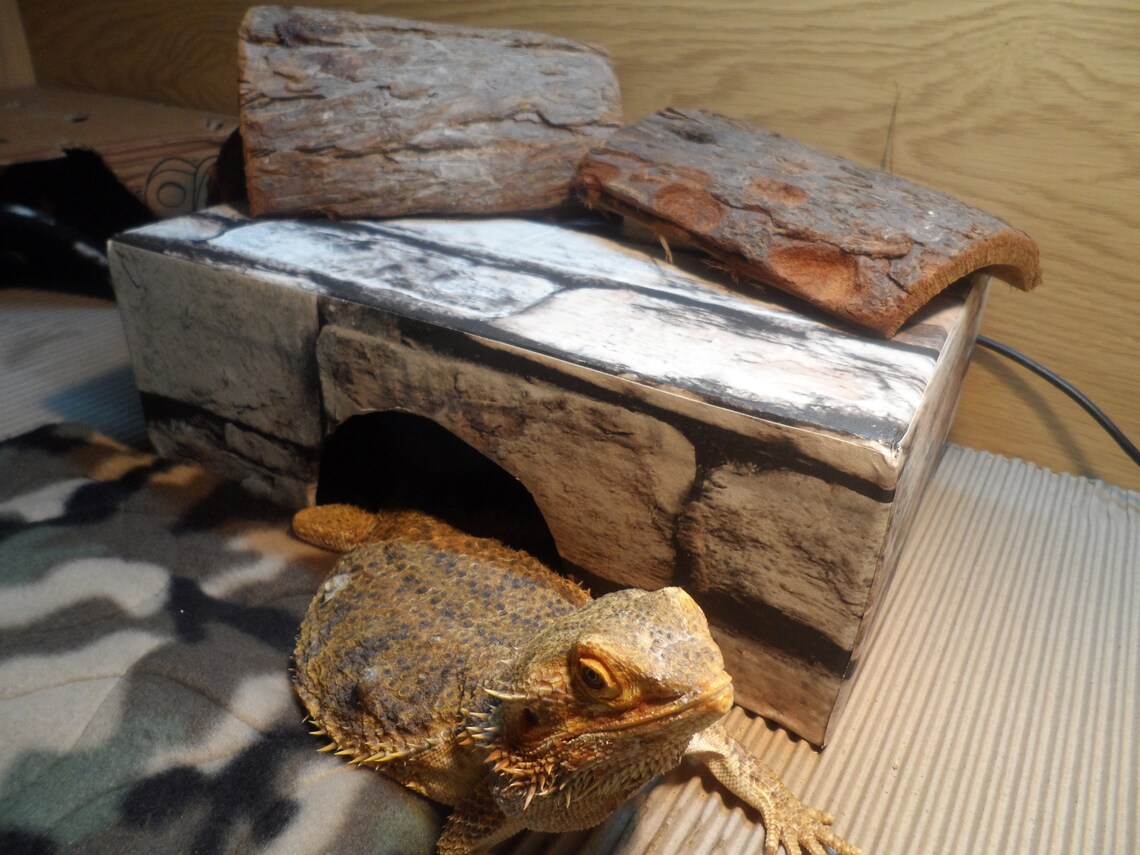
It is important that you establish this range of temperatures to choose from as beardies are cold-blooded animals and use their surroundings to regulate their body temperature. Whatever you choose, your lighting scheme should provide your beardie with a basking spot of around 100-110 degrees F (37-43 degrees C) on one end of the tank, with the other end being cooler but no lower than 70 degrees F (21 degrees C). This can best be accomplished with the use of Mercury Vapor Bulbs (MVBs), or by a combining a basking bulb with another light source that supplies the UVA/UVB (e.g. Temperature and lighting: Because they are from the Australian Outback Bearded Dragons require a light source with a strong UVA/UVB output and a fair amount of heat. It is generally not recommended to keep more than one bearded dragon in an enclosure, as they see other members of their species as either a threat or a source of competition. Sandy substrates, or any substrate with large, indigestible particles should be avoided as these pose the highest impaction risk. Examples of acceptable substrates include repticarpet, plantation soil, paper towel or slate tile. You will also need a substrate that stays dry and poses a minimal risk of impaction. To furnish your beardie enclosure we recommend at least two hides (one for the hot end of the enclosure, and one for the cool end), a water bowl, a food bowl, something to climb on so that they can get closer to their basking light. Housing: An adult Bearded Dragon can be kept in an enclosure with minimum dimensions of 36″ L x 18″ W x 16″ H (otherwise known as a “40 gallon breeder tank” in the hobby). Pellet foods are great for gutloading your feeder insects, however, as they are nutritionally formulated for beardies.

Pellet foods should only be fed rarely, or kept on hand as an emergency food supply, as they do not resemble anything a beardie would naturally consume and can cause impaction issues if not completely hydrated. This website has more information on what is and isn’t acceptable to feed beardies.įood items should periodically (2-3 times a week) be dusted with a calcium supplement, as this nutrient is a critically important to their metabolism. A good example is spinach, which is very high in oxalic acid, which interferes with calcium absorption in reptiles. It is worth noting that some items should be avoided, even though they may be healthy for people. Collard greens, bok choy, mustard greens, dandelions, and prickly pear fruit are all excellent staple veggies and any of the feeder insects sold in our store will be readily taken. Native Range: Bearded Dragons are native to central Australian deserts, however all specimens in North America are captive bred.ĭiet: Bearded Dragons are omnivores, with a diet consisting mainly of insects and leafy greens. When a beardie is relaxed these spines are harmless and will fold back when touched, but when they are stressed or agitated they will puff themselves up making the spines go rigid.


More brightly colored individuals are available, however, and may be sold as “High-red” or “Citrus” morphs, among other things.īearded Dragons are covered in defensive spines and rough scales that help them wedge themselves into tight crevices and ward off predators. Generally they grow to be about 18″-24″ in length and are colored light brown with bright yellow, orange and/or red hues. Description: Bearded Dragons (Pogona vitticeps) are relatively large lizards belonging to the family Agamidae.


 0 kommentar(er)
0 kommentar(er)
